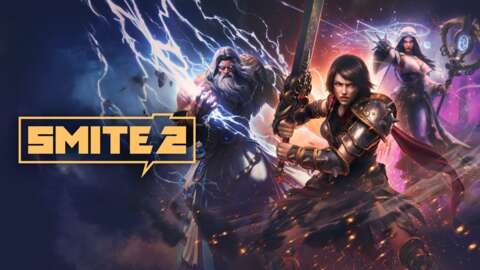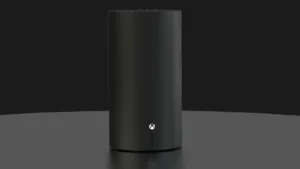The 11 Biggest Changes In Smite 2
Smite 2 has begun running alpha tests, offering anyone who has preordered the MOBA sequel a chance to check it out in its unfinished state. While it might look like it’s just a big update, it is a drastic overhaul of the game, including fundamental changes to stats, classes, and builds, making it feel like a true sequel. Many of the changes are aimed at giving players more freedom in how they play and who they play. Here’s every big change in Smite 2.
Any God, Any Role
In the original Smite, gods were categorized into five different classes: Hunter, Mage, Warrior, Guardian, and Assassin. These classes determined the type of items a god could buy and if they were better at mitigating damage or dealing it. For example, Guardians were great at being the main tank, and while you could build them for damage, the way they were designed made that less effective.
Smite 2 has done away with these role designations and limitations, adjusting each god’s skills and level progression to be more flexible. While Conquest, the main three-lane MOBA mode, still has five distinct roles–which are different from the classes–you are placed into, it’s now much easier to play any god you want, regardless of the role. This offers far more flexibility in team composition and playstyles, with any God being just as viable as a Solo lane as they are as a Jungler.
No more Physical and Magical item limitations
In addition to dropping classes, Smite 2 also drops the Physical and Magical item limitations, allowing for more interesting builds. Previously, certain classes were designated physical or magical, with different items available based on which class you were playing. Now, any God can buy any item, making something like a crit chance Ymir build a reality, since Guardians previously were unable to build critical-chance items. This is just another big change focused on allowing any god to be built into any role.
Strength and Intelligence
Replacing the Physical and Magical item delinations is the new Strength and Intelligence system. The main difference here is that each God doesn’t only scale their damage based on one stat versus the other. For example, Odin has three abilities: his spear, shield, and leap. His spear and leap scale exclusively off the Strength stat, but his shield scales off a combination of Strength and Intelligence, so adding in some Intelligence items could boost your shield. Each god’s abilities scale differently, with varying percentages and combinations, so each one will likely have multiple unique builds you can make.
No relics, boots, or starting items
Another change to the item system is the removal of starting items and relics. Boots were already removed from the original Smite and won’t be making a return in Smite 2, with every God starting at max movement speed. Starting items took their place in original Smite, offering early-game power spikes, along with late-game upgrades that offer power spikes. Instead, players will need to go straight into building full items in Smite 2, putting a bigger emphasis on picking a strong first item.
Relics previously offered small combat boosts on long cooldowns, with abilities like Blink and Shell. One relic, purification beads, has been given to everyone in every match automatically, granting brief crowd-control immunity on use. Some of the other relics have been worked into the new active items, like Blink, which now appears as combat blink on the Blinking Amulet item.
Active Items
In addition to items having passive abilities, some now have active abilities as well. These abilities typically operate on a cooldown, giving you a boost in combat. Some items provide a high damage boost, like Dagger of Frenzy increasing basic attack damage and speed for a few seconds. Others provide defensive boosts, like Phoenix Feather healing you for a percentage of your max health. Lastly, there are some items that mimic what relics previously did in Smite. Blink, which teleports you a short distance, is now the active ability of Blinking Amulet.
A smaller cast of Gods, for now
Smite has over 130 playable gods, but that number is going to start much lower in Smite 2. The first alpha weekend included just over a dozen gods, and the developer has confirmed what people can expect from the roster. Hi-Rez has said that it plans to have over 24 gods by the time Smite 2 exits its alpha and over 50 gods by the 1.0 launch. Of those 50 gods, at least five are planned to be new gods, with Hecate the first of the new batch.
While Hi-Rez hasn’t come out and confirmed which gods are making the jump over first, Reddit user Viva_la_pwn has put together a list of every god that has been confirmed via trailer footage, direct mention by Hi-Rez, or has gotten a cross-gen skin. Cross-gen skins are skins being sold in original Smite currently that will also unlock for you in Smite 2 when that god is added.
Ascension Passes
Ascension Passes are a new way to unlock cosmetics in Smite 2. While not present in the alpha, Hi-Rez detailed the new passes in a blog post. The main highlight is that, as you play as a god, you will earn followers and mastery levels up to 10, earning stars after that point. All of that is the same as the original Smite, but the Ascension Passes add a number of additional cosmetics, with three skins and double followers being the main highlight of purchasing the pass. Basically, as you play more of a god and gain followers, you will unlock special cosmetics that can only be unlocked this way.
Reworked jungle buffs
Jungles, small camps of non-player enemies you can kill for buffs, XP, and gold, have been reworked in Smite 2. All of the buffs themselves are new, but the bigger change is that the camps now have levels. They all start at level 1 and don’t drop buffs right away. The camps will level up after being cleared a couple times, with a higher level dropping a stronger buff. There are four buffs in Smite 2 currently: Blight, Inspiration, Pathfinder, and Inspiration. Blight causes your abilities and basic attack to apply poison, which deals a percentage of the enemies max health over three seconds. Inspiration gives you and nearby allies increased Strength and Intelligence. Pathfinder gives bonus movement speed and Primal provides bonus protections when you land an ability on an enemy.
Reworked item tiers and progression
Among the many changes to items and match progression is the reworking of how items are built. There are still three tiers, with Tier 3 being a full item. Previously, there would be a family of three to four tier three items that share Tier 1 and Tier 2 items. This meant that unless you wanted to sell an item and fall behind in gold, once you started a Tier 1 item, you were stuck with the limited options to build into. Now, Tier 1 items build into far more options, giving you flexibility if you need to adjust your build during a match.
Tier three items can also be reached using multiple Tier 1 and Tier 2 items. Two Tier 1 items can combine into a single Tier 2, and two Tier 2 items can be built into a single Tier 3. This means if you don’t have enough gold to go from a single Tier 1 item to a Tier 2, you can grab another Tier 1, which will give you a small power boost and its cost is taken off the Tier 2, so you don’t lose gold in the process.
New uncapped stats
Some stats in Smite 2 have hard limits, maxing out even if you continue to build items with that stat. There are, however, a couple that are uncapped, meaning that you continue to benefit from building more items with that stat. Those are cooldown rate, Strength, Intelligence, attack speed, and both magical/physical protections. Some of these stats do have diminishing returns, with cooldown rate becoming less effective the more you build, but other stats like Strength and Intelligence don’t become less effective the more you add.
Conquest will be the only game mode to start
While Smite offers several different game modes, with a variety of team sizes and objectives, Smite 2 will be slimming the selection down to just Conquest to start. Conquest is the classic MOBA game mode, featuring 5v5 with three lanes and large jungles with multiple objectives. While nothing has been fully confirmed, one Smite 2 developer said on Twitter that the team is focused on making Conquest as good as it possibly can. However, modes like Arena and Joust are popular enough that he guessed that they will be added at some point in the future.










